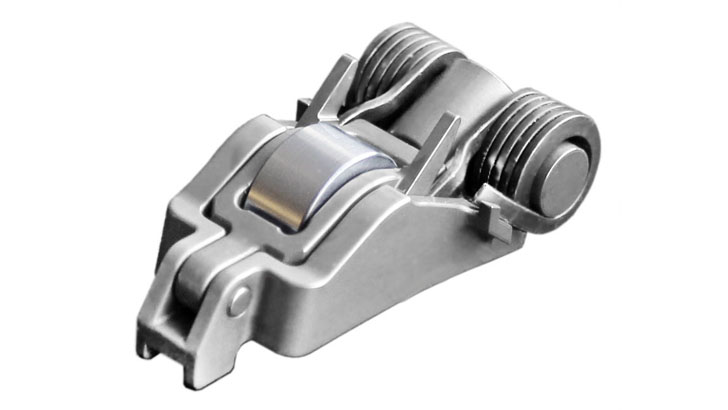Cylinder deactivation has been a great tool in recent years to help big, fuel-thirsty V-8s operate a little more efficiently at times, but one supplier could be developing a new system that could bring this technology to some of the littlest modern engines on the market. Engine technology supplier Schaeffler thinks that as automakers strive for maximum vehicle efficiency, the idea of a three-cylinder engine with cylinder deactivation is a distinct possibility.
Vehicles like the Ford Fiesta, Mini Cooper and Mitsubishi Mirage already offer an I-3 engine in the U.S., and as these engines continue to grow in popularity, Schaeffler is looking for ways to keep these diminutive engines at their peak efficiency. Why the need to improve the efficiency of an already-efficient engine? Bob Zito, Schaeffler’s engineering director-engine components, told WardsAuto that automakers could squeeze out even more power from these engines (up to 180 hp) in the near future using turbocharging and direct injection, and the addition of cylinder deactivation could help offset the mpg-robbing power gains with a fuel economy improvement of about 3 percent.
Schaeffler’s system uses a roller-finger follower (shown above) that mechanically cuts off air and fuel to cylinders when possible, but a new system uses electronic controls for even more accurate operation, which allows for “tremendous” fuel economy gains. This new system also adds plenty of cost, so it makes sense equipping just one cylinder of a three-cylinder engine rather than four cylinders of a V-8. Even with the added costs, the technology is still less expensive and less complex than the technology used in a hybrid, and with automakers looking to pay big money for better fuel economy, small engine cylinder deactivation could potentially provide the best bang for the buck.
The article indicates that Schaeffler plans to start testing cylinder deactivation on three-cylinder engines within the next six months, and Zito believes that such a setup will be available in the U.S. before a four-cylinder engine with cylinder deactivation (which Volkswagen currently offers in Europe).
Schaeffler’s system uses a roller-finger follower (shown above) that mechanically cuts off air and fuel to cylinders when possible, but a new system uses electronic controls for even more accurate operation, which allows for “tremendous” fuel economy gains. This new system also adds plenty of cost, so it makes sense equipping just one cylinder of a three-cylinder engine rather than four cylinders of a V-8. Even with the added costs, the technology is still less expensive and less complex than the technology used in a hybrid, and with automakers looking to pay big money for better fuel economy, small engine cylinder deactivation could potentially provide the best bang for the buck.
The article indicates that Schaeffler plans to start testing cylinder deactivation on three-cylinder engines within the next six months, and Zito believes that such a setup will be available in the U.S. before a four-cylinder engine with cylinder deactivation (which Volkswagen currently offers in Europe).
